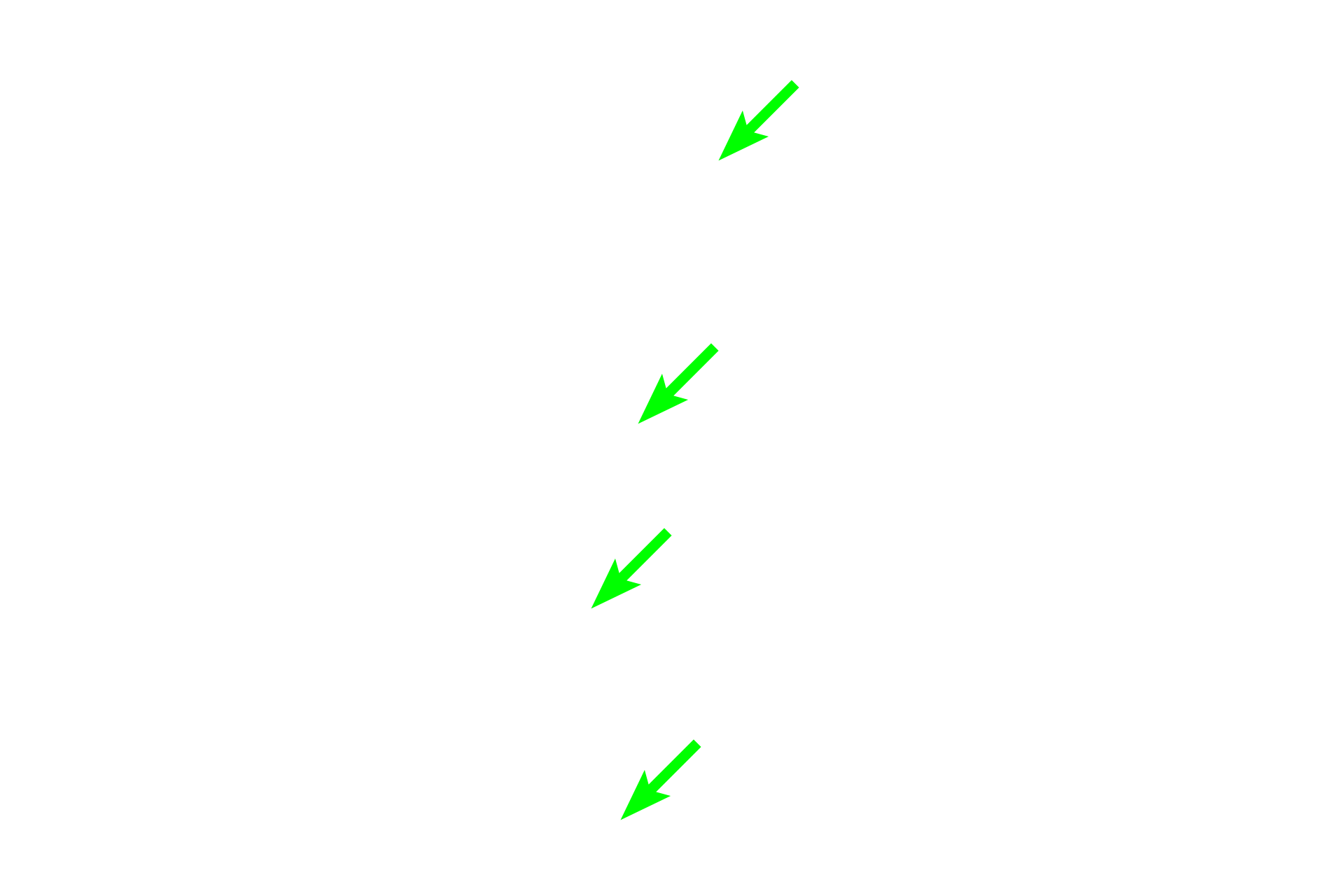
Ureter
The ureter is lined by transitional epithelium overlying a connective tissue layer. For most of the ureter’s length, the muscularis externa is divided into inner longitudinal and outer circular layers (the reverse of the digestive tract). However, near the urinary bladder, as seen here, an additional outer longitudinal layer is added. 400x

Transitional epithelium
The ureter is lined by transitional epithelium overlying a connective tissue layer. For most of the ureter’s length, the muscularis externa is divided into inner longitudinal and outer circular layers (the reverse of the digestive tract). However, near the urinary bladder, as seen here, an additional outer longitudinal layer is added. 400x

Connective tissue
The ureter is lined by transitional epithelium overlying a connective tissue layer. For most of the ureter’s length, the muscularis externa is divided into inner longitudinal and outer circular layers (the reverse of the digestive tract). However, near the urinary bladder, as seen here, an additional outer longitudinal layer is added. 400x

Inner longitudinal layer
The ureter is lined by transitional epithelium overlying a connective tissue layer. For most of the ureter’s length, the muscularis externa is divided into inner longitudinal and outer circular layers (the reverse of the digestive tract). However, near the urinary bladder, as seen here, an additional outer longitudinal layer is added. 400x

Middle circular layer
The ureter is lined by transitional epithelium overlying a connective tissue layer. For most of the ureter’s length, the muscularis externa is divided into inner longitudinal and outer circular layers (the reverse of the digestive tract). However, near the urinary bladder, as seen here, an additional outer longitudinal layer is added. 400x

Outermost longitudinal layer
The ureter is lined by transitional epithelium overlying a connective tissue layer. For most of the ureter’s length, the muscularis externa is divided into inner longitudinal and outer circular layers (the reverse of the digestive tract). However, near the urinary bladder, as seen here, an additional outer longitudinal layer is added. 400x

Adventitia
The ureter is lined by transitional epithelium overlying a connective tissue layer. For most of the ureter’s length, the muscularis externa is divided into inner longitudinal and outer circular layers (the reverse of the digestive tract). However, near the urinary bladder, as seen here, an additional outer longitudinal layer is added. 400x
 PREVIOUS
PREVIOUS